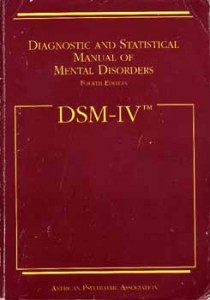Temper Dysregulation Disorder in the DSM-5?
David Axelson from Western Psychiatric Institute and Clinic gave a plenary talk on temper dysregulation disorder (TDD) with dysphoria at the 2011 Pediatric Bipolar Disorder Conference, held in Cambridge, Massachusetts in March. Researchers in the field have been discussing whether a diagnosis of TDD or severe mood dysregulation (SMD), a name Ellen Liebenluft of the National Institute of Mental Health has used to describe a similar behavior pattern, is necessary and should be included in the upcoming fifth edition of the Diagnostic and Statistical Manual of Mental Disorders (DSM-5).
The rationale for including a TDD or SMD diagnosis was the upsurge in the diagnosis of bipolar disorder among children. Researchers like Liebenluft believed that bipolar disorder was being over-diagnosed in children, and that some children could instead be classified as having a disorder that was limited to chronic irritability. Temper dysregulation disorder is what researchers eventually settled on. Post-hoc analysis of longitudinal epidemiological studies suggested that some chronic irritability experienced by children and adolescents developed into depressive and anxiety disorders rather than bipolar disorder.
However, as described in the epidemiological data of Merikangas et al. (which we will post later this week) and others, the frequency of youth diagnoses of bipolar disorder are not out of proportion with the number of diagnoses in adults. Now that it does not seem likely that bipolar disorder is being over-diagnosed among children, there is less rationale for the new diagnosis categories. In addition, it seems that TDD may not even capture a specific set of behaviors or symptoms. Read more
Revisions of the DSM-V Related to Bipolar Disorder in Children
 The Pediatric Bipolar conference in March ended with a discussion led by Ellen Leibenluft and Danny Pine of the NIMH about possible changes in the diagnostic criteria for childhood onset bipolar disorder being considered for the fifth version of the Diagnostic and Statistical Manual of Mental Disorders (DSM-V), which will be finalized in the next few years. There has been an increase in the diagnosis of bipolar disorder in children in the past decade, and many have attributed this to over-diagnosis. Controversy about the precise symptoms and thresholds for diagnosis has been prominent in the literature and in the popular press.
The Pediatric Bipolar conference in March ended with a discussion led by Ellen Leibenluft and Danny Pine of the NIMH about possible changes in the diagnostic criteria for childhood onset bipolar disorder being considered for the fifth version of the Diagnostic and Statistical Manual of Mental Disorders (DSM-V), which will be finalized in the next few years. There has been an increase in the diagnosis of bipolar disorder in children in the past decade, and many have attributed this to over-diagnosis. Controversy about the precise symptoms and thresholds for diagnosis has been prominent in the literature and in the popular press.
The major change proposed was that the syndrome of severe mood dysregulation (SMD) described by Leibenluft et al. in 2003, may be called Temper Dysregulation Disorder (TDD), and would not be considered part of the bipolar spectrum. This is in part because SMD is not associated with an increased incidence of a positive family history of bipolar illness. Part of the motivation for separating TDD from bipolar illness is to cut down on what some consider the over-diagnosis of bipolar disorder in children.
Psychotherapy Necessary for Bipolar Disorder and Severe Mood Dysregulation in Children
 Dr. Janet Wozniak of Massachusetts General Hospital initiated a survey, both at MGH and in the field, to ascertain practitioners’ experience with individual and family psychotherapeutic and educational approaches to childhood-onset bipolar illness. These types of approaches appear fundamental to treating children or families in which there is bipolar illness.
Dr. Janet Wozniak of Massachusetts General Hospital initiated a survey, both at MGH and in the field, to ascertain practitioners’ experience with individual and family psychotherapeutic and educational approaches to childhood-onset bipolar illness. These types of approaches appear fundamental to treating children or families in which there is bipolar illness.
It was the view of Wozniak, her survey, and many other investigators in attendance at the Pediatric Bipolar Conference in Cambridge, Massachusetts in March that such psychotherapeutic approaches are needed, and often recommended, but the availability of effective treatment and of therapists skilled in administering any of these psychotherapies in children is often lacking.


